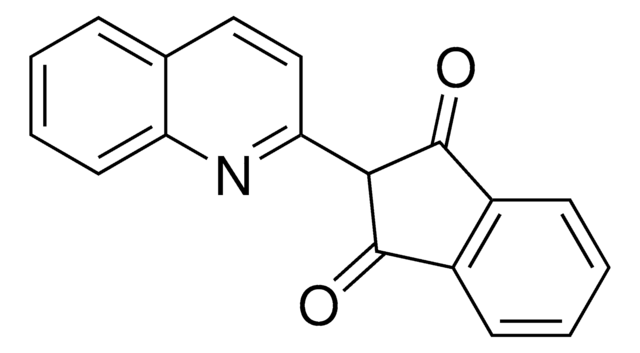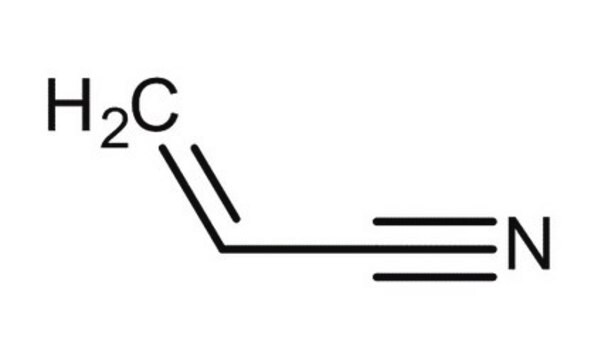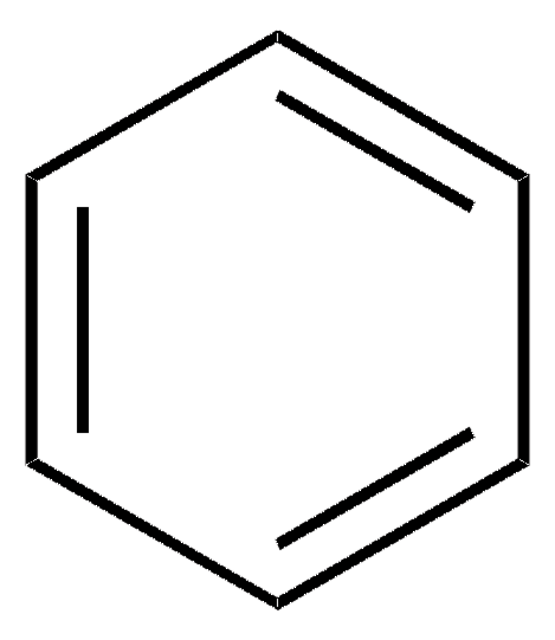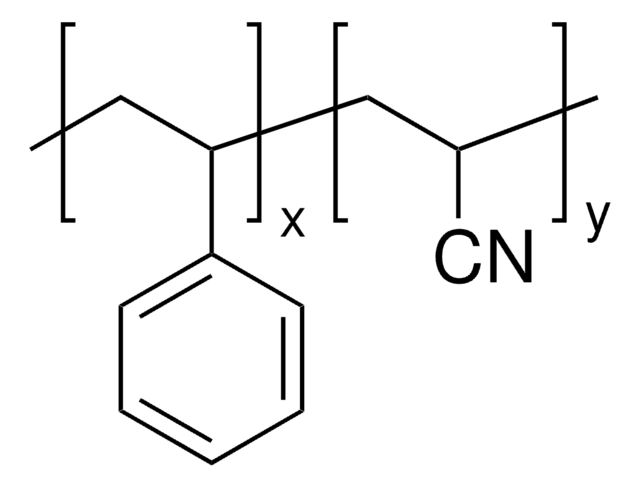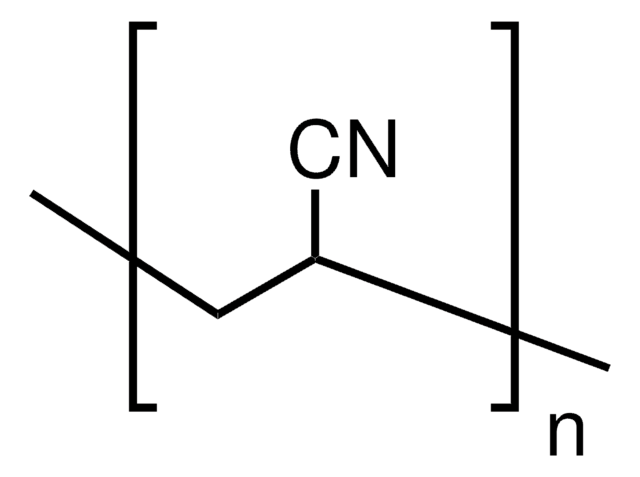320137
Acrylonitrile
≥99%, contains 35-45 ppm monomethyl ether hydroquinone as inhibitor
Sinonimo/i:
Vinyl cyanide
About This Item
Prodotti consigliati
Densità del vapore
1.83 (vs air)
Livello qualitativo
Tensione di vapore
86 mmHg ( 20 °C)
Saggio
≥99%
Forma fisica
liquid
Temp. autoaccensione
897 °F
contiene
35-45 ppm monomethyl ether hydroquinone as inhibitor
Limite di esplosione
17 %
Indice di rifrazione
n20/D 1.391 (lit.)
P. eboll.
77 °C (lit.)
Punto di fusione
−83 °C (lit.)
Stringa SMILE
C=CC#N
InChI
1S/C3H3N/c1-2-3-4/h2H,1H2
NLHHRLWOUZZQLW-UHFFFAOYSA-N
Cerchi prodotti simili? Visita Guida al confronto tra prodotti
Applicazioni
Azioni biochim/fisiol
Avvertenze
Danger
Indicazioni di pericolo
Consigli di prudenza
Classi di pericolo
Acute Tox. 3 Dermal - Acute Tox. 3 Inhalation - Acute Tox. 3 Oral - Aquatic Chronic 2 - Carc. 1B - Eye Dam. 1 - Flam. Liq. 2 - Skin Irrit. 2 - Skin Sens. 1B - STOT SE 3
Organi bersaglio
Respiratory system
Codice della classe di stoccaggio
3 - Flammable liquids
Classe di pericolosità dell'acqua (WGK)
WGK 3
Punto d’infiammabilità (°F)
23.0 °F - closed cup
Punto d’infiammabilità (°C)
-5 °C - closed cup
Dispositivi di protezione individuale
Faceshields, Gloves, Goggles, type ABEK (EN14387) respirator filter
Scegli una delle versioni più recenti:
Possiedi già questo prodotto?
I documenti relativi ai prodotti acquistati recentemente sono disponibili nell’Archivio dei documenti.
I clienti hanno visto anche
Articoli
RAFT (Reversible Addition Fragmentation chain Transfer) polymerization is a reversible deactivation radical polymerization (RDRP) and one of the more versatile methods for providing living characteristics to radical polymerization.
Il team dei nostri ricercatori vanta grande esperienza in tutte le aree della ricerca quali Life Science, scienza dei materiali, sintesi chimica, cromatografia, discipline analitiche, ecc..
Contatta l'Assistenza Tecnica.
